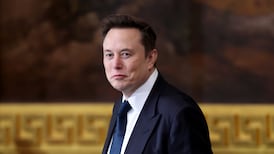For months Yevgeny Prigozhin has theatrically railed against Russia’s military leaders. He has lambasted the defence minister, Sergei Shoigu, and commander in chief, Valery Gerasimov, accusing them of bungling and incompetence over the war in Ukraine.
In one video Prigozhin blamed Moscow for the deaths of soldiers from his Wagner mercenary unit. Their bodies were piled up behind him. In a letter, he challenged Shoigu to visit the bloody Ukrainian frontline for himself, where Wagner troops have been fighting and dying in the eastern city of Bakhmut.
[ Ukraine war – live updatesOpens in new window ]
The Prigozhin-Shoigu feud appeared to be real. But in Putin’s opaque system – more of an Ottoman court than a western-style government – it was hard to tell. For more than two decades Putin has played the role of supreme arbiter-in-chief, playing off one ambitious Kremlin faction against another.
It was the old tactic of divide and rule. Prigozhin had previously proven himself to be a loyal ally entrusted with special state tasks, including the attempt to sabotage the 2016 US presidential election. According to one interpretation, Prigozhin’s bitter public crusade against Shoigu was licensed by the man at the top.
The dramatic events of the past 24 hours suggest any such deal with the Kremlin, if it ever existed, is off. Prigozhin is demanding nothing less than Shoigu’s condign removal and the replacement of the entire general staff. On Saturday night, Prigozhin announced he was pulling back from the Russian capital and returning to base, in order to avoid spilling blood.
Earlier, an armoured Wagner column had rolled into Russia from occupied eastern Ukraine, without meeting much opposition. Wagner troops appear to have seized key buildings in Rostov-on-Don, the headquarters of Russia’s southern military district command and an important logistics node for Moscow’s so-called special military operation.
Panicked Russian generals have urged Prigozhin to back down and to call off his “state coup”. Armoured vehicles trundled in the streets of Moscow, apparently sent in to guard the defence ministry and other bureaucratic centres from possible internal attack. Police built barricades; diggers grubbed up roads.
The extraordinary images brought back memories of the unsuccessful putsch in the summer of 1991, staged by hardliners in the KGB, in order to preserve faltering communist power. The plot fell apart. It hastened the Soviet Union’s demise, months later.
It is too early to say if history is repeating itself. Prigozhin is no peacenik. His manifesto is for Russia to fight a more vigorous campaign in Ukraine, with better top-level decision-making, more honesty, and fewer soldiers needlessly chucked into the “mincer” and sacrificed in badly-thought-out attacks.
Prigozhin accuses Shoigu of covering up the scale of Russian losses. He is also unhappy at retreats last year, when the Russian army was forced to abandon the southern city of Kherson, and most of Kherson oblast in the northeast.
Whatever the outcome of this weekend’s astonishing drama, Putin looks weaker than at any time since he became president in 2000. His decision to invade Ukraine has proven a major strategic blunder – the biggest of his career and one that may, sooner or later, force him from power.
Putin gave a TV address on Saturday morning, after Prigozhin’s mutiny began. He accused the rebels of treason and introduced an “anti-terror” regime in Moscow.
Even if the rebellion quickly fails, the shock waves will continue for months, fuelling political instability and raising question marks over Putin’s fitness to lead. In the body-strewn Shakespearean play of Putin’s long, Macbeth-like presidency, we are into act five.
All of which raises significant and intriguing possibilities for Ukraine. Wagner forces have been based in the occupied Luhansk and Donetsk regions. Some of them have departed in the past 24 hours and returned to Russia. There are early reports that Ukrainian troops have seized back several ruined streets in Bakhmut, where a grinding battle has raged for months, and taken further enemy positions lost in 2014.
[ How Wagner, a Frankenstein’s monster, eventually turned on its creator PutinOpens in new window ]
Prigozhin’s privateer army of volunteers and released convicts has proven itself to be a more disciplined and able military outfit than the regular Russian army. It has vanished from the scene, at least for now, and turned its attention to Russia itself.
In June Ukraine started a long-awaited counteroffensive, using western weapons and tanks. The goal is to seize back the land corridor connecting occupied territory in the eastern Donbas with Crimea and the southern parts of Kherson and Zaporizhzhia provinces.
Progress has been slow. The Russian military has mined fields, constructed anti-tank trenches and used its air and artillery superiority to slow down Ukrainian advances. Some observers were beginning to wonder if the war was heading towards stalemate, with the existing 600-mile frontline a new de facto border.
Prigozhin’s high-stakes power grab changes these calculations. It would be foolish to dismiss the Russian military. But the chances of a Ukrainian breakthrough this summer have risen dramatically. If Russian frontline morale collapses, and soldiers are unwilling to fight, ground could be seized quickly.
Putin’s dream of capturing the whole of Ukraine and “reuniting” it with Russia has not come to pass. It has turned out to be a dictator’s fantasy: the product of poor intelligence, messianic thinking and Putin’s extreme isolation during the Covid pandemic. Now Russia stands on the brink of civil strife, victory over Kyiv seems further away than ever. – Guardian














